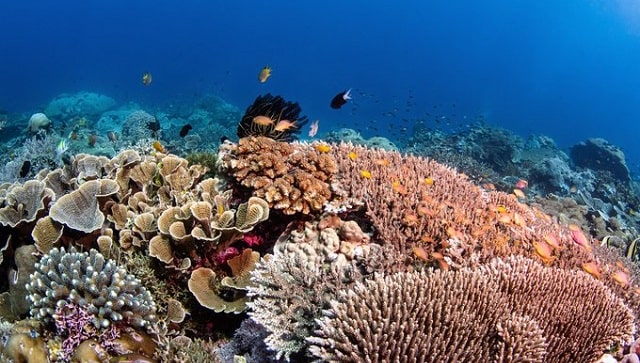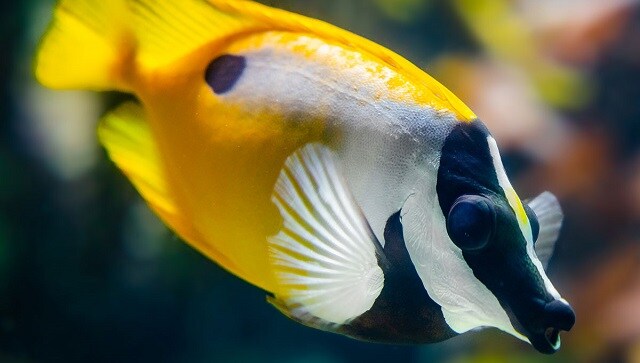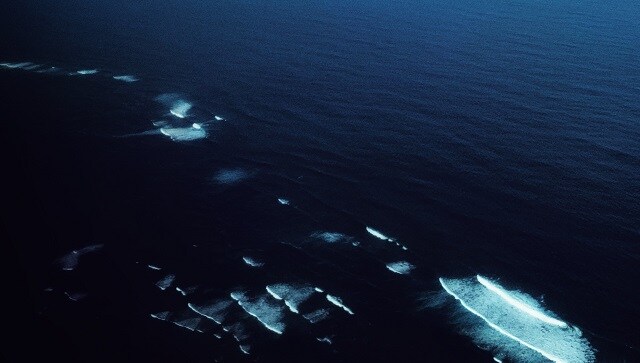Global warming, as well as dynamite fishing and pollution, has wiped out 14 percent of the world’s coral reefs from 2009 to 2018, leaving graveyards of bleached skeletons where vibrant ecosystems once thrived, according to the largest ever survey of coral health. Hardest hit were corals in South Asia and the Pacific, around the Arabian Peninsula, and off the coast of Australia, more than 300 scientists in the Global Coral Reef Monitoring Network reported. “Climate change is the biggest threat to the world’s reefs,” co-author Paul Hardisty, CEO of the Australian Institute of Marine Science, said in a statement. [caption id=“attachment_10028031” align=“alignnone” width=“640”] Coral Reefs get their beautiful colours from billions of symbiotic algae living in their folds. A change in the ecosystem could cause the reefs to expel these algae and leads to a phenomenon called bleaching. Image courtesy: Twitter @AllenCoralAtlas, photo by Brooke Peterson[/caption] How does climate change impact coral reefs? As temperatures rise, mass coral bleaching events and infectious disease outbreaks are becoming more frequent. Additionally, carbon dioxide absorbed into the ocean from the atmosphere has already begun to reduce calcification rates in reef-building and reef-associated organisms by altering seawater chemistry through decreases in pH.
Coral Reefs get their beautiful colours from billions of symbiotic algae living in their folds. A change in the ecosystem could cause the reefs to expel these algae and leads to a phenomenon called bleaching. Image courtesy: Twitter @AllenCoralAtlas, photo by Brooke Peterson[/caption] How does climate change impact coral reefs? As temperatures rise, mass coral bleaching events and infectious disease outbreaks are becoming more frequent. Additionally, carbon dioxide absorbed into the ocean from the atmosphere has already begun to reduce calcification rates in reef-building and reef-associated organisms by altering seawater chemistry through decreases in pH.
This process is called ocean acidification.
This makes the world’s coral reefs much more vulnerable to poor health and irreparable damage.Oceans absorb more than 90 percent of the excess heat from greenhouse gas emissions, shielding land surfaces but generating huge, long-lasting marine heatwaves that are pushing many species of corals past their limits of tolerance. What’s the extent of the damage? When conditions such as the temperature and/or the acidity of the water change, corals expel the symbiotic algae living in their tissues, responsible for their colour. This is called bleaching. And the increased frequency of severe weather events, such as cyclones and record rainfall levels, can send an influx of freshwater and sediment further out from the coast onto the reef causing mass bleaching over large areas. A single so-called mass bleaching event in 1998 caused by warming waters wiped out eight percent of all corals. The graphic in the following tweet shows what such a mass bleaching event can look like.
Loss of coral from 2009 to 2018 varied by region, ranging from five percent in East Asia to 95 percent in the eastern tropical Pacific. The UN’s climate science advisory panel, the IPCC, projects with “high confidence” that global warming of 1.5 degrees Celsius above preindustrial levels will see 70 to 90 percent of all corals disappear. In a 2C world, less than one percent of global corals would survive. Earth’s average surface temperature has already increased by 1.1C above that benchmark. [caption id=“attachment_10028111” align=“alignnone” width=“640”] Coral reefs cover only a tiny fraction – 0.2 percent – of the ocean floor, but they are home to at least a quarter of all marine animals and plants. This foxface rabbitfish is one of the many marvelous reef-dwelling species that are endangered because of mass bleaching. Twitter @NatlAquarium[/caption] Why does it matter? Coral reefs cover only a tiny fraction, 0.2 percent, of the ocean floor, but they are home to at least a quarter of all marine animals and plants. Besides anchoring marine ecosystems, they also provide protein, jobs and protection from storms and shoreline erosion for hundreds of millions of people worldwide. The structures are natural barriers between the open ocean and land, reducing the strength of waves that hit the coastline, especially during hurricanes and other storms. They are also a reason behind tourism revenue The value of goods and services from coral reefs is about $2.7 trillion per year, including $36 billion in tourism, the report said. A
2015 study
by WWF projects that the climate-related loss of reef ecosystem services will cost$500 billion per year or more by 2100. [caption id=“attachment_10028221” align=“alignnone” width=“640”]
Coral reefs cover only a tiny fraction – 0.2 percent – of the ocean floor, but they are home to at least a quarter of all marine animals and plants. This foxface rabbitfish is one of the many marvelous reef-dwelling species that are endangered because of mass bleaching. Twitter @NatlAquarium[/caption] Why does it matter? Coral reefs cover only a tiny fraction, 0.2 percent, of the ocean floor, but they are home to at least a quarter of all marine animals and plants. Besides anchoring marine ecosystems, they also provide protein, jobs and protection from storms and shoreline erosion for hundreds of millions of people worldwide. The structures are natural barriers between the open ocean and land, reducing the strength of waves that hit the coastline, especially during hurricanes and other storms. They are also a reason behind tourism revenue The value of goods and services from coral reefs is about $2.7 trillion per year, including $36 billion in tourism, the report said. A
2015 study
by WWF projects that the climate-related loss of reef ecosystem services will cost$500 billion per year or more by 2100. [caption id=“attachment_10028221” align=“alignnone” width=“640”] The picture shows waves breaking at the beginning of the coral reef. Image Courtesy: Twitter @abumburu[/caption] So is it a lost cause? Not quite. “Since 2009 we have lost more coral worldwide than all the living coral in Australia,” noted UNEP executive director Inger Anderson.“We can reverse the losses, but we have to act now.” The report, titled Status of Coral Reefs of the World: 2020, found reasons for cautious optimism. “Some reefs have shown a remarkable ability to bounce back, which offers some hope for the future recovery of degraded reefs,” Hardisty said. East and Southeast Asia’s “Coral Triangle”, which contains nearly 30 percent of the world’s coral reefs, were hit less hard by warming waters over the last decade, and in some cases showed recovery. This resilience could be due to species unique to the region, potentially offering strategies for boosting coral growth elsewhere, the authors said. Based on nearly two million data points from 12,000 sites spanning 73 countries and 40 years, the report is the sixth such global survey and the first since 2008. To measure change over time, the researchers contrasted areas covered by healthy live hard coral with areas taken over by algae, a sign of coral distress. The report was undertaken with support from UNEP and the International Coral Reef Initiative, a partnership of governments and research organisations focused on preserving corals reefs and related ecosystems. With inputs from AFP
The picture shows waves breaking at the beginning of the coral reef. Image Courtesy: Twitter @abumburu[/caption] So is it a lost cause? Not quite. “Since 2009 we have lost more coral worldwide than all the living coral in Australia,” noted UNEP executive director Inger Anderson.“We can reverse the losses, but we have to act now.” The report, titled Status of Coral Reefs of the World: 2020, found reasons for cautious optimism. “Some reefs have shown a remarkable ability to bounce back, which offers some hope for the future recovery of degraded reefs,” Hardisty said. East and Southeast Asia’s “Coral Triangle”, which contains nearly 30 percent of the world’s coral reefs, were hit less hard by warming waters over the last decade, and in some cases showed recovery. This resilience could be due to species unique to the region, potentially offering strategies for boosting coral growth elsewhere, the authors said. Based on nearly two million data points from 12,000 sites spanning 73 countries and 40 years, the report is the sixth such global survey and the first since 2008. To measure change over time, the researchers contrasted areas covered by healthy live hard coral with areas taken over by algae, a sign of coral distress. The report was undertaken with support from UNEP and the International Coral Reef Initiative, a partnership of governments and research organisations focused on preserving corals reefs and related ecosystems. With inputs from AFP
)